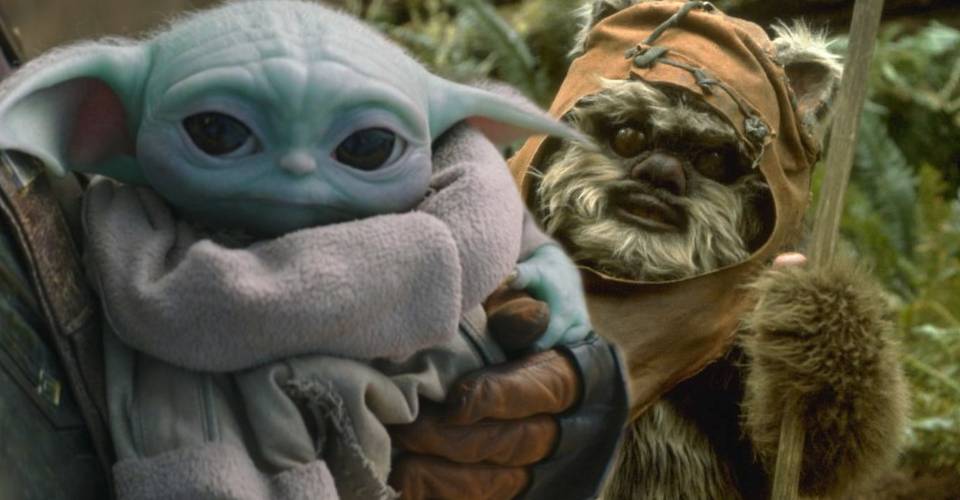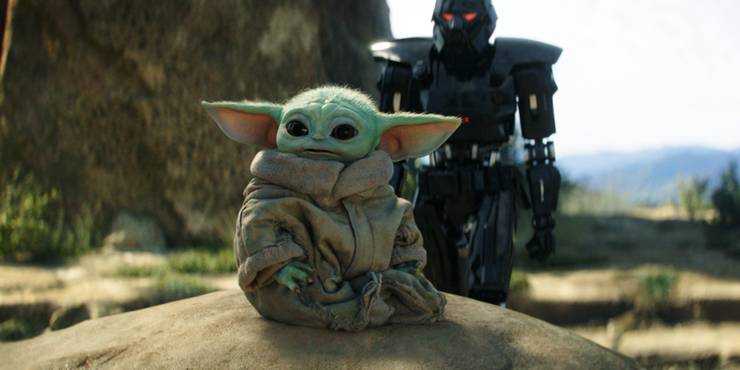Star Wars has a tricky past with cute or gimmicky characters, receiving criticism across all 3 trilogies. How is Baby Yoda the exception

Everyone loves Baby Yoda (or Grogu, to use his proper title), but how did he escape the usual criticism aimed at cute Star Wars characters? Despite being the first ever live-action Star Wars TV series, The Mandalorian proved a huge critical and commercial success on Disney+, with everything from the cinematography and music to the characterization and exemplary use of lore receiving praise. Beloved by hardcore Star Wars nuts and casual mainstream onlookers alike is Baby Yoda - a young member of Yoda's enigmatic species found by Din Djarin at the end of The Mandalorian's opening episode. Everyone from your grandmother to your best friend's roommate's dog has heard of Baby Yoda, and everyone loves him dearly.
And yet Star Wars' history with cute, lovable characters suggests that the mischievous little egg-muncher should've been a divisive flash in the pan. When the Ewoks made their debut in 1983's Return of the Jedi, Endor's furry population was dismissed as a shameless attempt to pander to younger fans. Make cuddly little bears fall over and poke people with sticks (and die tragically in ways that still haunt our minds...) and watch the merchandise revenue flow in. Another gimmick character arrived in 1999's The Phantom Menance - Jar Jar Binks. Unlike the Ewoks, Jar Jar didn't even have the benefit of being cute, and fans once again decried the attempt to create a kid-friendly toy-shifter. Even with Lucas gone, the Star Wars sequels continued this unfortunate trend with Porgs and BB-8, the latter of which enjoyed more love but couldn't entirely escape fan ire.
Baby Yoda falls into much the same category. He's deliberately cute, engages in physical comedy, and appeals to people who think a Mandalorian is a brand of European car. So why does he escape the same critical side-eye? The strength and importance of the Grogu character compared to his cutesy predecessors is surely the biggest reason. The Ewoks, for example, serve as an allegory for the Viet Cong and help the Rebel Alliance defeat the Empire, but there's nothing specific about Endor's locals that makes them vital to the film. Their role could just as easily be filled by the Wookiees (which was the original plan).

Baby Yoda, on the other hand, is the key component of The Mandaorian's plot, starting as a simple McGuffin before evolving into one half of a beautifully endearing on-screen duo. The pint-sized Force wielder shows light and dark, switching from adorably healing his friends, to choking out Cara Dune and chowing down on the eggs of an endangered species. There's also logic behind Baby Yoda's appearance beyond cuteness for cute's sake. Grogu's resemblance to Yoda factors into his proficiency with the Force, and the rarity of his species explains Djarin's difficulty finding a new home for the brat. There's a good reason Baby Yoda looks like a baby Yoda.
Succeeding where previous "cute" characters failed isn't just down to slick writing. The likes of BB-8 and the Porgs played a massive part in marketing their respective Star Wars movies. Sometimes, cute new characters actually have a bigger role in promotional material than the film itself. But Baby Yoda remained a complete secret ahead of his grand reveal, despite The Mandalorian being a huge deal for the newly-launched Disney+. Then after Baby Yoda's debut, there was no Disney merchandise waiting in the wings to ship out as Grogu-fever took the world by storm. Even the most cynical Star Wars fan can't accuse Baby Yoda of being a marketing tool or made-for-merch when there's no marketing or merch to speak of until season 2. Baby Yoda successfully proved that light and cute Star Wars characters needn't breed controversy.


0 Comments